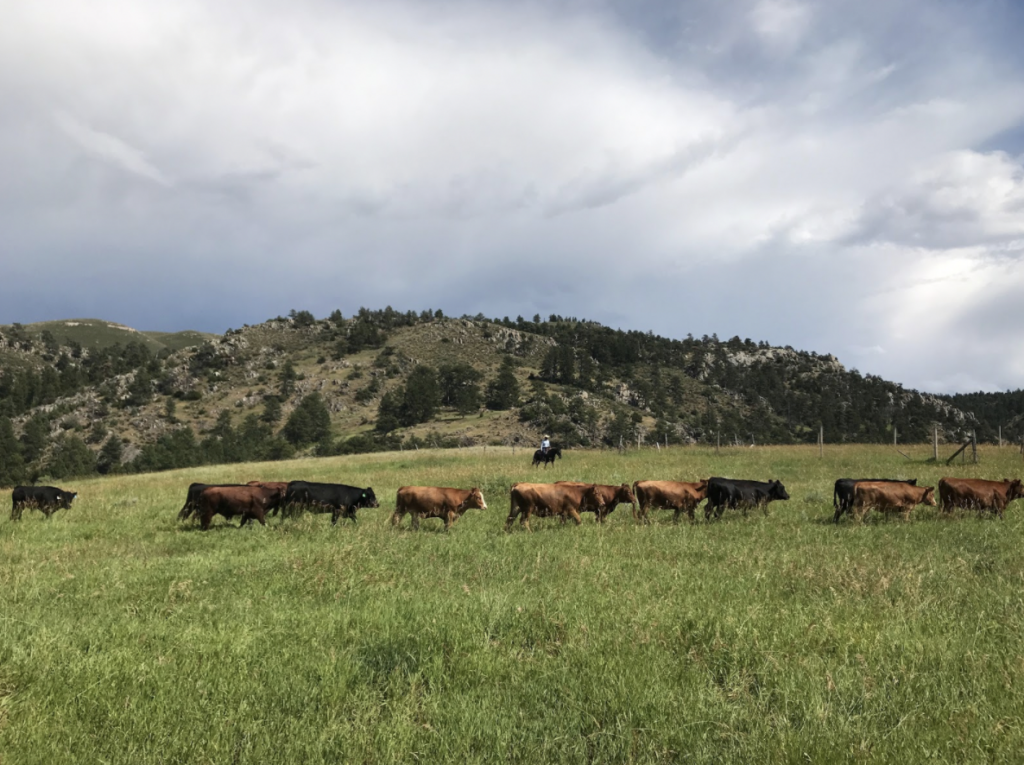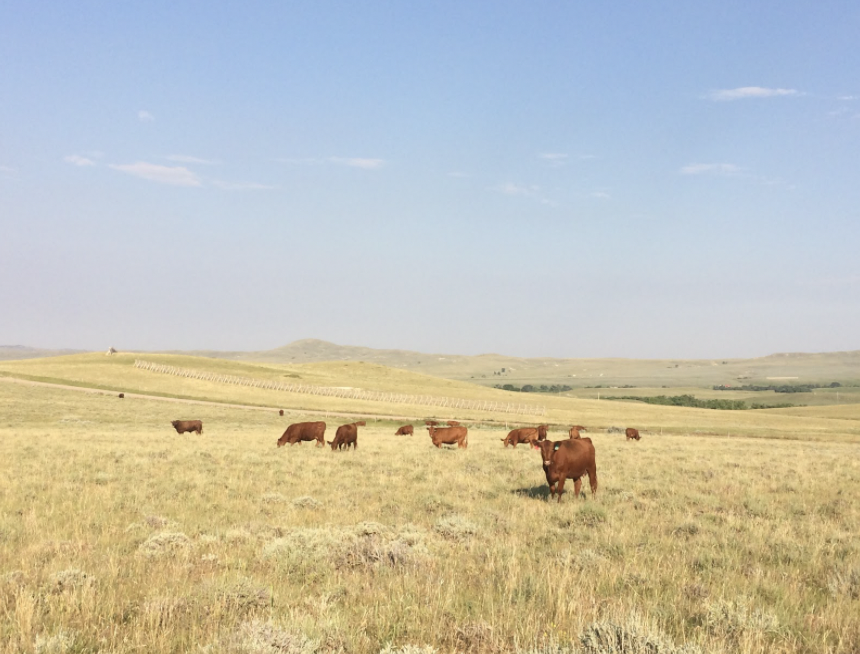If you visit cattle ranches in most of the U.S., you’ll see two kinds of cattle grazing methods: the first is where cattle graze freely on the land, the second is rotational grazing. But on a ranch in May, Idaho, there is a third method, called “inherding.” With the inherding method, cattle are herded on horseback to different areas of the land throughout the summer months. By rotating where they graze from, cattle are exposed to diversified food sources, and consume a phytochemically-rich diet.
The feasibility of the inherding method is what we’ve been exploring this semester. The term “inherding” was coined by Glen Elzinga, owner of the 48,000 acre ranch allotment in Idaho. Elzinga has spoken about inherding as ”reinventing an ancient wheel.” It’s an apt way to describe the traditional process that is still practiced around the world, more commonly known as shepherding. At Elzinga’s ranch, inherding has been practiced for over 4 years.

There are some obvious – and not-so-obvious – advantages to inherding. One obvious advantage is that it’s beneficial for the cattle: like humans, a diversified diet is optimal for good health. Inherding also has the potential of providing ecological benefits to rangelands. Under some grazing strategies, cattle often choose one or two species of grasses that are the tastiest, and are conveniently located by lakes or riparian areas. ¹ This can have ecologically devastating effects on water areas, affecting the quality of the water and abundance of small plants by riparian edges. With inherding, crews can direct cattle away from riparian areas, or ecologically sensitive areas such as sage grouse habitat. Another advantage is that it prevents overgrazing in any given area, which allows the land to rejuvenate and grow between grazing periods. There have been a number of indications that riparian area ssaw positive impact only a few years after implementing inherding, with aspens and beavers returning to riparian zones.
This leads to healthier soil, creating more pervious surfaces for capturing water. Lastly, herders have the opportunity to guide cattle to graze in areas where there are invasive species, allowing for more native species to prosper.
Other benefits of practicing inherding include mitigation depredation by wolves, a common problem in a number of areas around the United States. Many ranchers often lose a few head of cattle each summer due to wolves’ predation. Additionally, costs of livestock care decrease considerably because supervision of cattle reduces their chances of eating toxic plants, or needing as much medical care in general, due to their diverse diet and supervision.
Although there are clearly benefits to inherding, we do have some concerns about the feasibility of implementing this method on a larger scale. Some of our questions include: Is it economically feasible to implement herding? If so, is there a particular scale that the ranch needs to be? What are other factors that should lead a rancher to determine whether this practice is a good fit for them? What are the cultural and sociopolitical factors that need to be considered?
As we continue to explore regenerative agriculture methods, and specifically that of inherding, we will be conducting a feasibility study to gain clarity on what types of ranches could implement it effectively, and what economic, sociopolitical, and cultural factors should be considered. The practice of inherding could have far-reaching effects on cattle, human, and ecological health in regions in the western US. Could it be a new era of ranching? We’d like to find out!

Cally Guasti, Research Assistant| Cally is a Master’s of Environmental Management candidate focusing on ecosystem management and conservation, and environmental justice issues. The intersection of public health and environmental issues, such as resource allocation and equity, are her principal commitments. She has a background in case management and environmental education. In her free time, Cally loves to birdwatch and write fiction. | Blog

